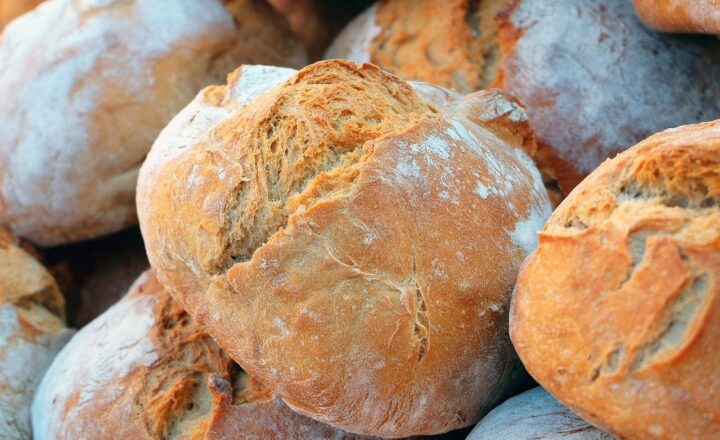
Eating healthy does not have to break the bank. With some planning, clever shopping, and a dash of creativity, you can make nutritious food choices that don’t stretch your budget. This article will cover a variety of strategies to help you navigate the grocery store with a focus on health and savings.
1. Understanding the Basics of Healthy Eating
Before diving into the specifics of budgeting, it’s essential to understand what constitutes healthy eating. A balanced diet includes a variety of foods:
- Fruits and Vegetables: Aim for at least five servings a day. They are rich in essential vitamins, minerals, and fiber.
- Whole Grains: Choose whole grains over refined grains. Foods like brown rice, quinoa, and whole wheat bread provide more nutrients and fiber that can help with digestion.
- Lean Proteins: Include sources such as chicken, fish, beans, and legumes. These are generally lower in fat and calories than their red meat counterparts.
- Healthy Fats: Incorporate healthy fats from sources like avocados, nuts, seeds, and olive oil while limiting saturated fats.
Understanding these fundamentals will assist you in making informed choices when planning your meals on a budget.
2. Plan Your Meals Wisely
Meal planning is one of the most effective ways to save money and reduce food waste. Here’s how to get started:
- Create a Weekly Menu: Dedicate time each week to plan your meals. Include a variety of recipes that focus on the ingredients you already have or are on sale.
- Make a Shopping List: Once your menu is set, create a shopping list based on the ingredients you’ll need. Stick to this list to avoid impulse purchases.
- Batch Cooking: Prepare large quantities of meals and freeze portions for later. This saves both time and money while ensuring you have healthy options available throughout the week.
Taking these steps can significantly impact your food budget while promoting healthier eating habits.
3. Shop Smart
The grocery store can be a maze of choices and expenses, but shopping smart can lead to healthier food selections without overspending:
- Buy Seasonal Produce: Fruits and vegetables that are in season tend to be less expensive and fresher. Visit local farmers’ markets for great deals, or purchase from the store’s produce section according to seasonality.
- Choose Store Brands: Often, store brands offer the same quality as name brands but at a lower price. Look for these options when shopping for pantry staples and frozen foods.
- Buy in Bulk: Purchasing items like oats, beans, rice, or flour in bulk can save money. Just ensure you’ll use them before their shelf-life expires.
- Shop the Perimeter of the Store: The perimeter of the store typically features fresh produce, meats, and dairy, while the inner aisles are often stocked with processed foods. Focus your shopping in these outer sections for healthier choices.
These shopping strategies can lead to healthier purchases that fit within your budget constraints.
4. Cooking at Home vs. Eating Out
Cooking at home is not only cost-effective but also allows for healthier meal preparations:
- Control Ingredients: When you prepare meals at home, you control the ingredients and portions, ensuring a healthy meal without hidden calories or sugars often found in restaurant dishes.
- Experiment with Recipes: Embrace the creativity of cooking! Look for healthy recipes that use economical ingredients. Cooking can be a fun family activity too, making meal preparation enjoyable.
- Limit Takeout Meals: When you do choose to eat out, opt for healthy menu items or sharing dishes to reduce costs and caloric intake. Limit this to special occasions or times when cooking is impractical.
By emphasizing cooking at home, you set the stage for healthier eating and clever budgeting.
5. Utilize Frozen and Canned Foods
Frozen and canned foods can be nutritious and budget-friendly alternatives:
- Frozen Fruits and Vegetables: Typically picked at peak ripeness, frozen options retain their nutrients and can be a great time-saver during meal prep. They can be added to smoothies, stir-fries, or soups.
- Canned Goods: Choose low-sodium canned foods such as beans, tomatoes, and vegetables for affordable protein and fiber sources. Rinse them under water to reduce sodium before use.
- Shelf-Stable Options: Grains like quinoa and barley, as well as dried beans, can be stored for extended periods, making them easy to buy in bulk and save money over time while providing excellent health benefits.
Relying on these convenient options allows for flexibility and less food waste, enhancing your ability to eat well on a budget.
6. Adapt Recipes to Include Economical Ingredients
A creative approach to cooking can ensure a healthy diet without high costs:
- Ingredient Swaps: Modify recipes to use more economical items. For example, use lentils in place of ground meat in tacos for a fiber-rich and lower-cost meal.
- Stretching Meals: Incorporate fillers such as beans, grains, or vegetables into dishes to extend servings and reduce the overall cost per meal.
- Plan Beyond Entrees: Use leftovers creatively. Incorporate them into new meals such as soup, salads, or stir-fries to maximize your ingredients.
Such versatile cooking can help maintain nutritious eating habits while also being considerate of your wallet.
7. Staying Motivated and Tracking Progress
It is crucial to stay motivated as you embark on this journey toward healthier eating on a budget:
- Evaluate Your Goals: Regularly assess your eating habits and adjust your approach as needed. Tracking progress helps keep you focused and accountable.
- Involve Others: Get friends or family involved in the process to share thoughts, recipes, and experiences while encouraging healthy eating habits together.
- Celebrate Small Wins: Recognize your efforts and successes along the way. Celebrating progress, regardless of size, can boost motivation and reinforce your commitment to health.
As you see improvements in health and budget, you’ll feel more empowered to continue making healthy choices in the long run.
Conclusion
Making healthier food choices on a budget is entirely feasible with the right approach and mindset. By planning meals, shopping strategically, and cooking at home, you can prioritize your health without compromising your finances. As you adopt new habits and routines, remember that every small change contributes to your long-term goals. By incorporating creativity and flexibility into your food choices, you can build a healthy lifestyle that is easy on your wallet and rewarding in your overall well-being.








